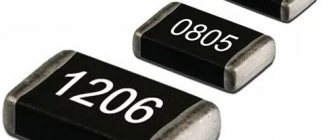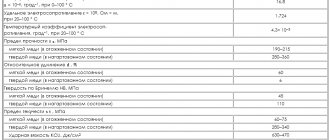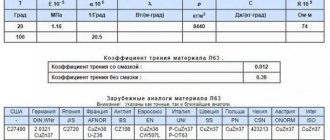Nowadays, very different brands of corrugated sheets are used for roofing and construction work.
And this is understandable, because profiled sheets, due to their simplicity and low cost of operation, are quite in demand on the building materials market.
Profiled sheets
But the variety of brands of corrugated sheets has another side - sometimes it’s very difficult to figure out which type is suitable for a particular task.
Below we will tell you how the designation applied by the manufacturer to a sheet of corrugated sheet is deciphered, and also what its especially popular brands are intended for.
Relevance of marking corrugated sheets
Today, profiled sheets are used everywhere in construction.
It is difficult for a person who does not understand the nuances of construction to navigate the wide range of products presented. This situation complicates the selection of materials. To level out problems with selection, a system for marking corrugated sheets has been thought out, which can be deciphered as follows:
- The first letter indicates the type of material and scope of application, for example, roofing or suitable for building a fence.
- The first digit deciphers height values from 6 to 114 mm. The higher this parameter, the more loads the sheet can withstand.
- The second number indicates the thickness - from 0.45 to 0.9 mm. The load-bearing profiled sheet is made from thick steel, for walls - from thin steel.
- The third number indicates the width of the profile material. The indicator depends on the height of the profile - the larger this parameter, the narrower the corrugated sheet. Maximum values – 1150 mm.
- The last digit in the marking code is not always prescribed by the manufacturer, since it indicates the maximum length, which reaches 12,000 mm.
Bent profiled sheets with trapezoidal corrugations are produced in accordance with GOST 24045-2016. The regulatory document provides technical conditions for the manufacture of products. Gosstandart also determines the requirements for raw materials, coating, completeness, dimensions, etc.
Pros and cons of metal flooring
The use of corrugated sheets is popular due to its advantages:
- Resistance to temperature changes (possibility of choosing material for installation in areas with harsh climates, subject to compliance with established rules of use), wind loads, and UV rays.
- A price that is suitable for different categories of buyers.
- Light weight, thanks to which you can lift the profiled sheet to a height without the use of special equipment.
- High bending strength.
- Fast installation.
- Fire safety, environmental cleanliness.
- Large length of corrugated sheet (maximum 12 meters). When covering the roof, a minimum number of joints are formed.
- Possibility of replacing a damaged sheet with a similar one.
- A rich palette of colors, allowing you to choose any shade that will fit into the architectural ensemble of the territory.
- Service life is more than 20 years.
The product has its disadvantages:
- If the protective coating is damaged, the service life of the product is reduced and it may become rusty.
- “Noisiness” of the material when using corrugated sheets as a roofing material. During precipitation, an unpleasant noise appears, reminiscent of “drum rolls” (if you use mineral wool for insulating protection, you can get rid of this disadvantage).
- Corrugated steel sheets get very hot in the sun.
Explanation of markings
Traditionally, profiled sheets are made from sheet steel coated with aluminum or galvanized aluminum. In the latter case, the marking on the profiled sheet is designated as “AC”; in the first case, there is no designation. However, if electrolytic technology is used to deposit zinc, the abbreviation “EOTSP” is established.
The material is also covered with an aluminum layer, which is reflected in the marking as “AL”, or with aluminum-silicon – “AK”. These types of spraying increase the wear resistance of the sheet, so the material belongs to the premium class.
To decipher the markings of corrugated sheets, it is enough to familiarize yourself with the alphanumeric designations.
Letters
Wall corrugated sheet C8
The first in the designation is the grade of corrugated sheet, consisting of one letter or set. To decipher letters, you also need to know the purpose of the material. After reviewing the information, you can independently choose the appropriate material, according to the requirements and purposes of construction. The basic classification is as follows.
- MP is a metal polymer. This material has high strength. Used as decorative protection for the product. The characteristics include the size and type of wave. The basic properties are similar to polycarbonate, used to create transparent inserts on the roof. This type of corrugated sheet is often used for roofing in the attic. Strength depends on the thickness of the product. The most reliable models can withstand wind forces of up to 25 m/sec.
- N – carrier. The designation of corrugated sheets with this letter indicates that the material is suitable for covering roofs, fences, and is also used for cladding frame houses. A high level of rigidity and strength is achieved by increasing the parameters of the waves and central grooves. The corrugated product can withstand strong gusts of wind, snowfall and other atmospheric phenomena.
- C – wall. Material with such a letter has low load-bearing properties. The product is used only for cladding structures from the outside. Due to its small thickness and relief, the profiled sheet is vulnerable to physical influences and wind.
- NS – load-bearing-wall. The presence of such markings on a corrugated product expands the scope of application. The material is used for cladding houses, industrial buildings, canopies, roofs and permanent formwork. The presented brand is available for purchase at the construction market or in a store.
The dimensions of the product are indicated in the sequence - height, width, thickness (mm).
Numbers
Deciphering the markings of a profiled sheet, you can see that the code consists of a set of letters and a combination of numbers that indicate the technical characteristics of the corrugated product. The first characters indicate the profile height, measured in millimeters - 20-75. The higher the indicator, the more pronounced the structure and relief of the product.
The second number is also indicated in millimeters and shows the user the strength properties and degree of rigidity. The third symbol indicates the width for installation, which may differ depending on the brand. The last number stands for the maximum length of the material. All indicators are measured in millimeters.
Material characteristics
Corrugated sheeting is a multifunctional building material that is used for cladding walls, building structures and fences, organizing floors and roofing. It is produced on the basis of thin-sheet cold-rolled steel, which during the production process is coated with a zinc alloy and a polymer or paint coating. A trapezoidal or rectangular profile is extruded onto the surface of the material, which increases the strength and load-bearing capacity of the profiled sheet. Corrugated sheeting has the following operational advantages:
- Corrosion resistance. Steel coated with zinc and polymer or paint does not corrode when in contact with water. This property makes corrugated sheeting an excellent material for roofing.
- A light weight. The weight of 1 square meter of this material does not exceed 5-7 kg, which is 4-5 times less than the weight of ceramic tiles or asbestos-cement slate. Low weight allows you to save on the roof rafter frame and pouring the foundation.
- High load-bearing capacity. Thanks to the additional stiffening ribs that the material profile forms, the load-bearing capacity of the corrugated sheet reaches 300-600 kg/m2, which allows it to withstand the weight of a person and intense snow loads without deformation.
Note! An important advantage is the affordable price. Different brands of corrugated sheets differ greatly in cost, the difference in price can reach 100%. The cost of the material is influenced by the thickness and size of the sheet, the type of coating, the metal consumption of the zinc coating and the load-bearing capacity of the material. For roof construction, it is allowed to use wall, load-bearing and universal grades of corrugated sheets, the profile height of which is at least 20 mm, and the steel thickness is at least 0.5-0.6 mm.
Structure of steel profiled sheet
Popular brands
Profiled sheet C10
Corrugated products can be used not only for cladding buildings and erecting fences, but also for making canopies and canopies. When choosing a model, pay attention to the alphanumeric dialing.
C10
The most popular model of corrugated product, which in terms of performance is not inferior to polymer siding panels. However, due to the small thickness of the steel, the material does not have high reliability parameters. The brand is inexpensive and, when painted, imitates lining.
C17
This marking often denotes corrugated sheets with a galvanized coating. The model is universal in application and has a distinct structure. The building material is used for cladding frame structures, creating canopies and roofs on outbuildings. Sheets can be painted and decorated on both sides with a protective coating.
C18
Wall material with increased height. Products are made from durable steel. Despite belonging to the load-bearing category, the corrugated product is used to create pitched roofs in regions with low levels of precipitation. The material is also suitable for constructing temporary fences.
NS 44 1000
Similar markings are applied to universal profiled sheets. The model has mounting parameters - 1 meter. The main area of use is the construction of fences and roof coverings. In this case, the quality corresponds to the price charged.
NS 35
A universal version of profiled sheets. Flooring with this designation has a long service life. The scope of application of NS35 is quite wide, for example:
- erection of temporary fencing;
- construction of fences;
- creation of roofing;
- exterior wall cladding;
- arrangement of partitions in utility rooms, warehouses, pavilions and hangars.
The thickness of galvanized corrugated sheeting of 0.8 mm ensures the reliability of the structure. The owner does not have to worry about the safety of the structure even in aggressive environmental conditions.
The manufacturer must attach an accompanying document with technical designations to each shipment of products.
Criterias of choice
To ensure that the corrugated roof covering does not allow water to pass through and lasts 20-25 years, it is necessary to choose the right material in accordance with the technical features of the design. Experienced craftsmen claim that roofing profiled steel sheets must meet the following requirements:
- Experienced craftsmen use profiled sheets with a polymer coating for roofing, as it better protects the material from corrosion. The paintwork is easily damaged during operation, which is why it lasts less.
- When purchasing corrugated roofing sheets, pay attention to the metal content of the zinc coating of the material. Economical options last less than premium ones, protecting the steel base less well from contact with water.
- The wave height of the roofing profiled sheet should not be less than 20 mm to ensure the outflow of melt and rain water from the roof slope.
- To save material, choose corrugated sheeting with the maximum usable sheet area. Typically, 7-wave options are considered the most economical.
- If the material is purchased directly from the manufacturer, it makes sense to order sheets with a length corresponding to the size of the slope in order to remove horizontal joints.
Experienced roofing craftsmen advise that when choosing a material, pay attention to the appearance of the corrugated sheet, the integrity of the packaging, and compliance with the GOST markings. There should be no damage or scratches on the surface of the sheet, the edges of the corrugated sheet should be smooth, without chips, then it will last the period stated by the manufacturer.
Options for using corrugated sheets
Sheet types
There are three types of material : for walls, roofing or load-bearing corrugated sheeting. Consider a roofing sheet. This metal profile must meet many requirements, withstand a load of up to 5 kilograms (sometimes up to 10 per square meter, especially in snowy areas), not succumb to destructive atmospheric factors, but at the same time be very light so as not to overstress the load-bearing columns. The brands that best meet these requirements are: s-20, s-21, PK 57, s-8 and pm-35.
Bottom line
We told you how to choose corrugated sheeting for different tasks and what its marking means. Thanks to the symbols in the product article, you can find out the technical characteristics, color and purpose of the product. The letters and numbers in the markings of corrugated sheets tell us:
- profile name;
- working sheet width;
- front side;
- type of polymer coating;
- manufacturer code;
- color;
- steel thickness.
We hope that now it will be easier for you to navigate the variety of materials on the market. But it is still safer to trust a well-known and trusted manufacturer who guarantees product quality.









